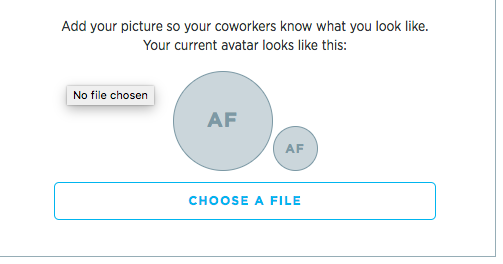If you are an American considering a move to Mexico for business or for pleasure, you may be wondering about the quality and affordability of schools in the country. There is free public education, but many citizens in large cities have other options for their children.
Mexican Schools' Facts
Like most other nations, Mexico maintains a system of free, government-funded public education. The nation's educational system has a long and storied history. The first university founded in Mexico was the Royal and Pontifical University of Mexico, and it was founded in 1551 by the degree of the king. In contrast, Harvard University, the oldest university in the United States wasn't founded until nearly one hundred years later in 1636.
Also similar to most other developed nations, access to Mexico's education system was limited to a population of males from urban areas whose families made up the elite class of the nation. Additionally, Mexican education was under the dominion of the Roman Catholic church for many years. It wasn't until the twentieth century that educational access became more widespread and conducted beyond the jurisdiction of the church.
After the country's liberal reform in the nineteenth century which separated church and state, the nation's educational system was given the opportunity to flourish and grow and expand to populations outside of the upper class. Benito Juarez the Mexican president made an effort to expand the school system and bring it out from under the control of the church. This caused an ongoing tension with the church regarding education in the country, which persisted for many years.
What's the History of Mexico's Educational System?
In recent years the poverty of the Mexican educational system has been a focus for politicians. President Enrique Nieto Pena promised to make the issue the most pressing of his presidency. Historically, Mexico's large rural population has made centralized schooling very challenging to organize and to implement.
Mexico's educational system began with schools founded to educate priests and lawyers and shortly after, medical doctors. Those who wanted to pursue these professions were generally the sons of the wealthy ruling class, and they were the only ones to whom education was granted. There was virtually no education for females aside from a few small schools run by nuns in the cities, but generally, the majority of the country was totally uneducated.
In 1833, a public education system in the country was created. This was seen as a liberal move, and there was definite opposition to it, but by and large, the population of Mexico demanded it. Education innovators in the 19th century created the first Prepatoria which had the industrial revolution model of teaching all students the same things at the same time. Secular schools were established, and the system was expected to teach good behavior, thriftiness, good manners and punctuality in lieu of things like reading or mathematics. This later changed.
What Are Schooling Practices in Mexico?
Schooling practices in Mexico are structured very similarly to the American educational system. Students begin in a primary school and then move to a secondary educational institution, which is the equivalent of middle school. After that students move on to high school. Following high school, many students choose to pursue higher education while others opt for jobs or vocational training. Postgraduate education is not uncommon in Mexico.
Since the separation of church and state, the Mexican public school system has faced similar challenges to the American school system. Uneven distribution of wealth and a powerful upper class means that funding is not always distributed to the places where it is most needed. Additionally, corruption in Mexico's government and ministries mean that money is not always diverted to the channels it was intended to. However, over the past several decades, Mexico's public education system has undergone significant changes for the better.
All children in Mexico are required to attend school until they are 12 years old. Afterward, attendance in high school is compulsory. Matriculation at a college or a university is largely dependent on the wealth of the family. Most rural areas do not have colleges or universities, and the cost of sending a student to the city for school is prohibitive for most families.
What Are the Schools in Mexico Like?
Although Mexico is a majority Catholic country with a very devout population, the teaching of religion is strictly prohibited in public schools. Private schools and parochial schools may teach religion, but these institutions receive no government funding. Public schools follow a set curriculum approved by the government, and until the age of 12, all children are required to attend.
Schooling practices in Mexico are fairly similar to those of most European or Anglo nations. The idea that education access is an inherent right that every child has is certainly the received idea and the party line of the government. However, the quality of the schools in Mexico varies tremendously. Rural locations with limited resources and areas of extreme poverty make access to a quality education very uneven across the nation. Schooling in Mexico City provides families with many more options.
Students in rural areas have much less access to quality public education than students living in urban centers. Higher population density means more students, which generally means more government funds. Additionally, the high concentration of wealth in urban areas means that private schools are likely to be an option, creating additional opportunities for education at a higher quality than is available in rural areas.
What Subjects Do Students in Mexico Study?
Mexican primary schools begin at grade one and finish after grade six. Learning a second language for Mexican students in mandatory. Most students choose to study English, but other languages are also offered. In the interest of increasing fluency and making students more available for work in other countries, most Mexican school days are divided, with half the lessons being taught in Spanish, and the other half in the second language that the student is learning. Some students study native Mexican languages like Tzoltzil or Tzeltzal.
Once students reach middle school, their subjects become more focused and less general, as they have covered most of the basics. Middle school or "Secundaria" as it is known is where students go more in-depth in their study of Mexican history, world history, science, mathematics and literature. Remote online courses called "Telesecunderia" are offered for the student population in Mexico who live in extremely rural areas and who have limited access to education in their district.
After Secundaria students move on to high school or "prepatoria." As the name indicates, the high school in Mexico is intended for students who are preparing to enter university either in Mexico or abroad. The high school has very recently become a mandatory requirement for all students. All students are expected to complete their education up through the 12th grade.
Prepatoria Curriculums in Mexico
Unlike American high schools that are structured fairly similarly for all students in terms of content and subject matter, a high school in Mexico has a distinct two-pronged structure. There are two programs that Mexican public school students typically enroll in. The first is the SEP Incorporated Prepatoria. This curriculum is mandated and run by the Secretariat of Public Education. This curriculum is imposed by the government, and it is what the leaders in education in the country of Mexico believed to be the most critical subjects.
The second program is a University Incorporated Prepatoria. These high schools are affiliated with a nearby university which establishes the curriculum and in some cases the teaching and classroom management style. These curriculums are often closely tied to the expertise or focus area of the university itself, so if a student has interest in the subject areas or disciplines for which the university is known, this school might be a good fit.
Private education is also an option in Mexico, for high schoolers. There are numerous private and parochial high schools available to students. Additionally, there are private schools that are affiliated with the International Baccalaureate program that students may be interested in participating in.
Preparing for Life After High School
While American high school education assumes that most students will go on to college where they will declare a major and begin to make preparations for their career, Mexican high schools offer opportunities for students who are planning careers outside of higher education. High schools in Mexico allow students to select a certain degree of specialization in their programming.
Schools that are distinctly and exclusively dedicated to preparing students for higher education may allow students to narrow their curriculum to focus on a specific subject area or discipline. Generally, these schools teach a fixed curriculum for the first half of the year, covering common topics and knowledge that is deemed necessary for all students.
For the second portion of the year, students can concentrate on the discipline they are hoping to pursue at the university level, whether it's social sciences, hard sciences, business, law or the arts. These schools are known as Bachilleratos.
Does Mexico Have Vocational Schools?
In addition to Bachilleratos, which are dedicated to the college-bound population, students who are interested in pursuing other vocations have options, too. Students who are interested in pursuing a career in technology or in business, in particular, have access to schools designed to prepare them to work in this field.
Unlike the United States system, the Mexican system does not require all students to complete a bachelor's degree or equivalent. Students may enter tecnologia or comercio programs accredited by the state once they have completed their high school requirements.
What Challenges Does the Mexican Educational System Have?
One of the greatest challenges facing Mexico's education system is the fact that so much of the population lives in rural areas. This makes completing a full high school curriculum very challenging for many students, many of whom need to be able to work. For this reason, the number of students who complete their education in this country is extremely low. Public schools are often underfunded and poorly staffed.
Because the wealthy typically live in urban areas and have access to private education, their attention is less focused on public schools and thus less funding is diverted there to make the necessary changes and improvements that could possibly improve the system. Expats typically don't send their children to public school because there are fewer resources in place for non-Spanish speaking students.
Families who move to Mexico from the United States or other countries may find that it is a good idea to send their children to public school for half the day and then home-school the rest of the day. This gives their children the opportunity to be immersed in the culture of the city while still getting their necessary education.
Related Articles
References
Writer Bio
Ashley Friedman is a freelance writer with experience writing about education for a variety of organizations and educational institutions as well as online media sites. She has written for Pearson Education, The University of Miami, The New York City Teaching Fellows, New Visions for Public Schools, and a number of independent secondary schools. She lives in Los Angeles.











